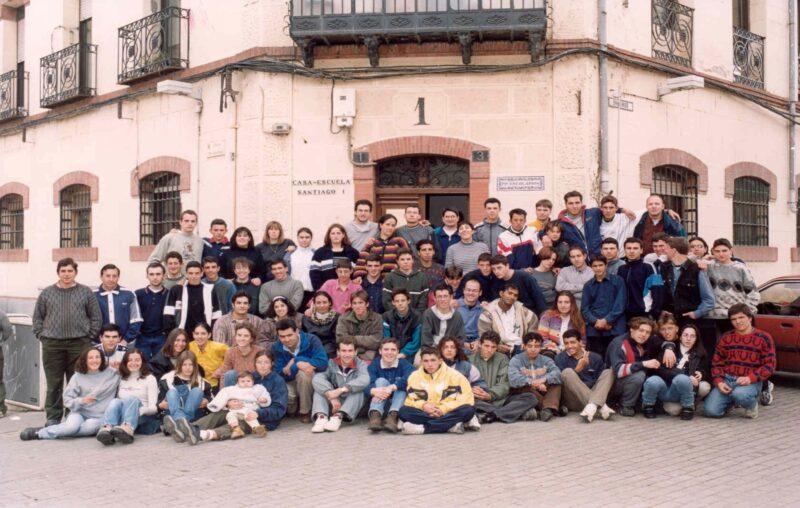Teaching the Butterfly of Liberty

Santiago, Chile is one of few Latin American cities where a gringo or West European would find a comfortable home. Mexico City remains the cultural capital of the Americas, but it is suffering from crime, traffic, and pollution. Buenos Aires, once the “joya de la abuela” (grandmother’s jewels), the capital in 1910 of the eighth-richest country in the world, was systematically decimated by a century of Peronist collectivism; in the past decade alone, Argentina’s poverty rate has jumped from 10 percent to 45 percent, with inflation soaring past 200 percent around the time President Javier Milei was inaugurated in December.
Santiago is leafy and beautiful, its ubiquitous restaurants offering world-class seafood, local and regional flavors, and superb French and Italian cuisine. Quaint neighborhoods are nestled within a ring of 5,000-meter mountains. One can ski in the morning, and enjoy the beach in the afternoon.
A short twenty-minute drive from the French bistros and the American fast-food chains, everything changes. The neighborhood of La Legua got its name because it was one league (about 5km) away from the city center. But it might as well be a different country, infested with drug violence, with blocks of controversial street art, including a large mural depicting Salvador Allende, the Marxist president who was ousted in the September 1973 coup. In the days after the coup, armed workers in the neighborhood defied the military in open combat, and chased away the military police. It took a joint operation of infantry and armor, a full week to subdue the neighborhood. Today, the neighborhood is a tumult of drug violence and a breeding ground for aspiring gangsters and radical left-wing agitators. Chile’s Marxist-Leninist Frente Patriotico Manuel Rodriguez was established in La Legua in 1983, initially as an attempt to overthrow the military dictatorship. Remarkably, the Frente’s influence persists long after the return to civilian rule, as it continues to draw support within the public education system, and from neighborhood youth with few other prospects.
Two things, beyond the murals, are immediately striking. First, the leafy boulevards have given way to dry, barren, dusty streets that are reminiscent of poor Mexican towns; the occasional stray shrub, struggling for water, pales in comparison to the tall trees of the richer districts. Second, the stray dogs proliferate; around the world, the tourist and business districts seem to have managed them, but their presence is a pretty good indicator of local economic conditions.
The houses are humble, with concrete floors and minimal upkeep.
Amidst the urban squalor, there is a tiny one-room school, la Casa Escuela. The school provides a safe haven for students, who can complete their homework safely away from gang violence. It also provides a more rigorous alternative to the mediocrity of state schools that are overrun with Marxist thought. Students here learn English and calculus.
The schoolhouse has a room with a table and a whiteboard. In the middle of it all is a quiet man. “Profe Milton” sits quietly until he is introduced. He then lights up, and speaks with gratitude for a foreign visitor – few santiaguinos make it to the ghetto, let alone foreigners. A humble man who gave up a career in accounting to teach needy kids, he beams when he speaks of his students, their hard work, and their achievements.
A half dozen students have come to the school on a Saturday morning, brimming with enthusiasm and curiosity at the visit of a foreign professor. They are all teenagers, ranging in age from 13 to 18. Irais and Simon want to study law, Martin wants to be a computer engineer, and Benjamín wants to study business. Jesús wants to study automotive engineering; when he was five years old, he was recruited by the Marxist-Leninist Frente to engage in direct action, including barricading streets with flaming tires and garbage.
The students introduce themselves and share their dreams.
The star of the schoolroom is a quiet, shy, and slightly awkward teenager, Viviana.
Viviana comes from a difficult background. Her father was killed when she was a little girl, as she was walking by his side, in drug violence. She grew up in poverty with her mother, and somehow stumbled upon the Casa Escuela. She is now registered in her first year at the top-10 Universidad del Desarrollo, a private university founded by Chicago Boys after the return to civilian rule in 1990.
Viviana has wanted to study business, and her dream is now coming true. At the age of 16, she wrote and published a short and partially fictionalized autobiography, La Mariposa que Pudo Volar (the butterfly that was able to fly). The origins of the book lie both in the socialist government schools and the alternative – a vision of liberty – provided by Profe Milton.
The left in Chile has not fared well politically since the heady days when President Salvador Allende was chummy with Cuban dictator Fidel Castro, and destroyed the economy through nationalization and fiscal folly. Naturally, the left went underground during the 17-year military dictatorship. In this inherently conservative country, it has had but one (two-term) president in the presidential palace in the past 30 years – and President Michele Bachelet was a tepid center-left politician.
The hard left has had to be content with civil society. Agitators provided the spark that lit the 2019 protests, and burned the city over three months of riots. And, in the style of Antonio Gramsci’s long march through the institutions, the hard left has taken over the government education system. Annual occupations of schools, and episodes of violence, including Molotov cocktail attacks by students on public buses, have become commonplace. Many of the schools have become leftist indoctrination centers. Within their walls, the presence of hard-left activism is palpable, with Marxist-Leninist Frente affiliates actively recruiting students, who have become a national political force.
Viviana was given the task in high school of writing a short story about children whose families were exiled by the “neoliberal” regime. She refused. Instead, she wrote a story about exiles, Venezuela-style, from a left-wing dystopia. She failed the assignment, but it was published by the Novum Foundation, which supports the Casa Escuela.
Viviana tells a story of hope. Her story is set in 2025. The 2020 constitutional convention has brought hard socialism (perhaps even Marxism) to Chile. Viviana, her friends, and their families, have escaped to the US. The high school students made a pact that they would attend each other’s college graduations; the short book takes place during a pre-graduation dinner in Chicago.
The flashbacks within the story tell of the challenges the kids all faced in Chilean high school, before they escaped to the US. The character who stands in for Viviana is frustrated with her socialist teachers, and refused to participate in the 2019 looting, rioting, and striking. Instead, she found the Casa Escuela. Although the protagonist doubts herself, the teacher takes her in, and encourages her: the school will give her the wings to fly, if only she applies herself and works hard. The timid butterfly graduates from high school and registers at a top US university.
Casa Escuela is but one of many global examples of grassroots, local, civil society efforts to bypass the state educational establishment, with its bloated bureaucracy, mediocrity, and hardcore socialist thought. One need only look at the work of education scholars James Tooley or Pauline Dixon in India and sub-Saharan Africa, to see the existing private alternatives.
Milton the teacher is a quiet man. But he lights up when talks about his students, whom he calls heroes. He is also very excited by the hope embodied in Javier Milei, across the Andes. He openly admits that he is teaching the theory and practice of a free alternative to socialism.
The school is not just a haven for students in an area that has been abandoned by the state, and where rule of law is not an insignificant question. Poverty and drug violence are very real. Marxist-Leninists agitators are very real. Here, communism is not a mere annoyance taught by professors of critical theory, but a very real impediment to individual growth and community hope.
The Casa Escuela is small and targeted (to use economics jargon, it would quickly suffer from diseconomies of scale if it were to grow – although the model can easily be replicated in the tens of thousands). But the project has already been successful: 34 former students are currently enrolled in university, and three have already graduated (with degrees in business, industrial engineering, and medicine).
Like the butterfly who finds it can fly after all, the spirit of freedom remakes itself in the hearts of humans, and in communities once beaten down by politics and violence.










